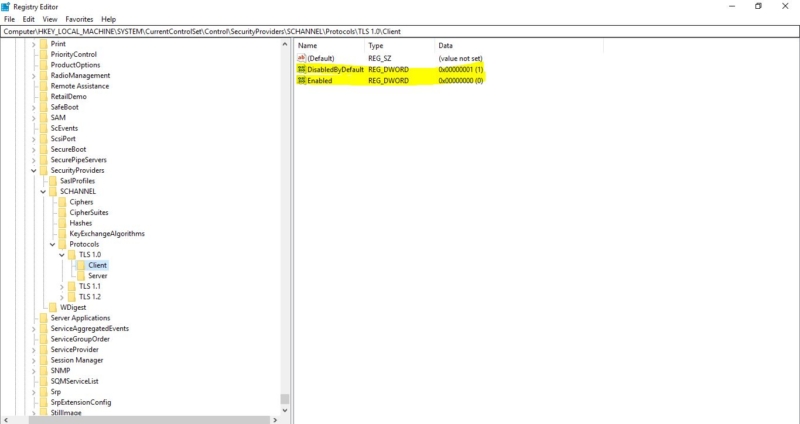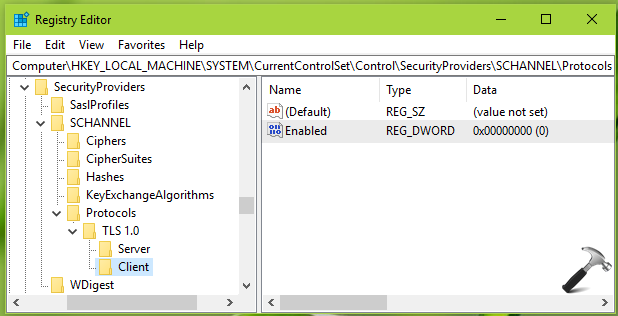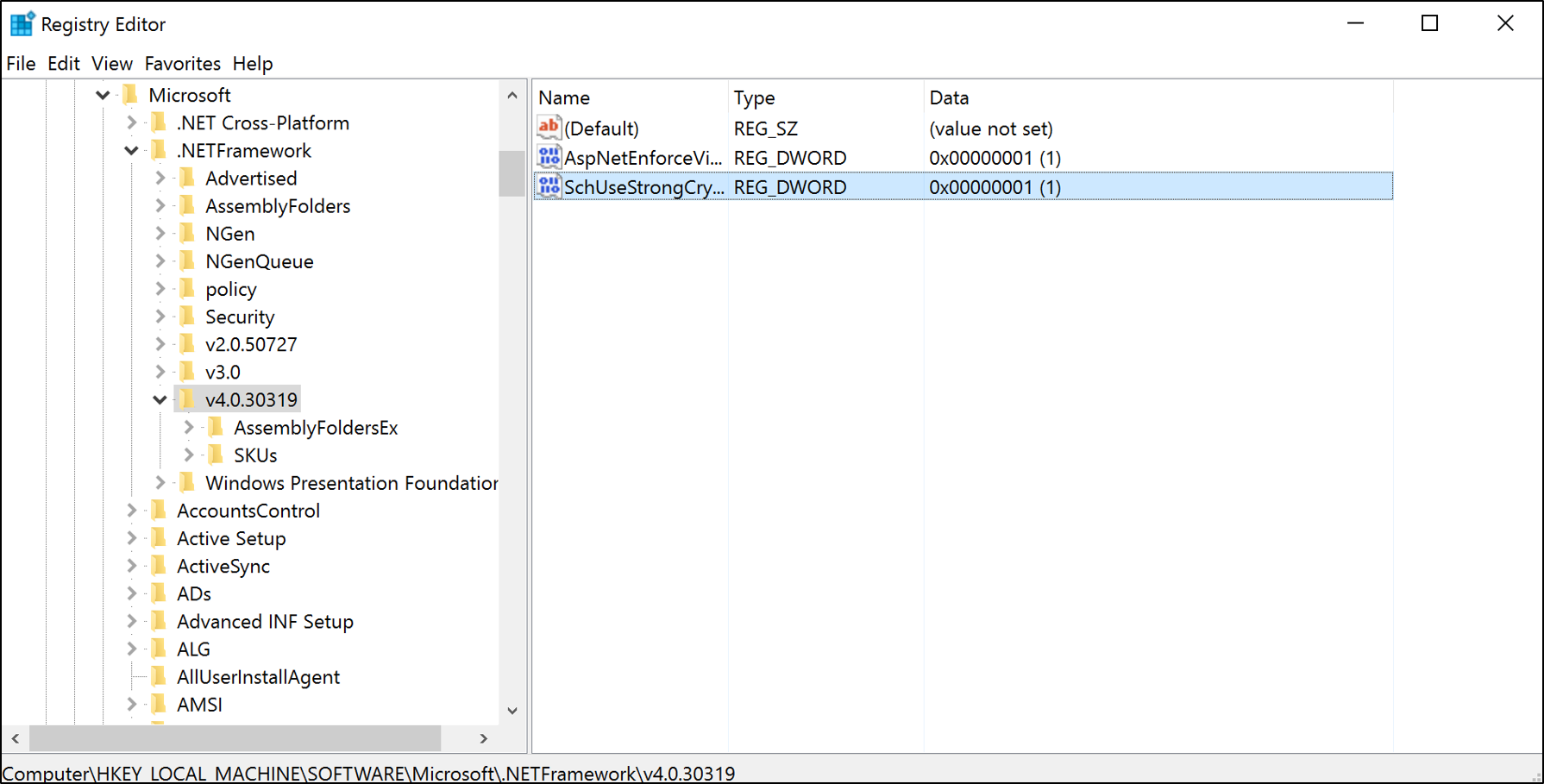
reg texts, but to be careful, I entered them manually. (Both create restore points just in case.)ĩA) Now edit the following registry entries to read as shown:
#Enable tls 1.2 windows 10 registry windows
Click English in the opening language window (or other language).ħ) Find down to POSReady, Windows XP Embedded versions of KB4230450:Ĩ) For each KB file: click, accept install, reboot.
#Enable tls 1.2 windows 10 registry how to
They figured out how to spoof WinXP-SP3's identity, so that it will pose as, and accept POSReady updates, including those which to add TLS1.2 to IE8.ġ) If not already updated, download and install Microsoft's updated Windows Installer 4.5 (KB942288-v3) fromĢ) Set a System Restore point marked, say, "Spoof POSReady ID registry edit"ģ) Put the following POSReady spoof text (omit the hyphen lines) in POSReady.txt, rename to POSReady.reg, right-click Merge, Yes.ĥ) Find down to POSReady, Windows XP Embedded versions of KB4019276Ĭlick Download button for that version. One or more MSFN gurus noticed that Microsoft is still updating Windows XP embedded OS for computerized cash registers (etc.), a WinXP variant known as "POSReady" (POS= Point Of Sale). (While 7.38.x.x may be actual "last" for WinXP, it may or not nag you to "update".) Repeat steps 4 and 5 for the registry key: HKEY_LOCAL_MACHINE\SOFTWARE\Wow6432Node\Microsoft.Below I'm posting a step-by-step fix to add TLS1.2 to IE8, so that Skype 7.36.0.150 will continue to run on Windows XP-SP3. Right-click on the right pane and create a new DWORD (32-bit) Value with Name SchUseStrongCrypto. HKEY_LOCAL_MACHINE\SOFTWARE\Microsoft\.NetFramework\v9 If you want to make sure strong cryptography is enabled and the SSL protocols for your requests to be TLS 1.0, TLS 1.1 and TLS 1.2, please follow this steps: Enable the SchUseStrongCrypto property in the Windows registry to use as the default protocols: TLS 1.0, TLS 1.1 and TLS 1.2

However, you need now to add it to your applications requests.ī.

Click on OK.Īfter the reboot, the server will be able to communicate through the SSL protocol you enabled. from the drop-down menu.Įnsure that the Value data field is set to 1 and the Base is Hexadecimal. Right-click the name Enabled and select Modify. Click on OK.Ĭreate another DWORD for the Client key as you did in Step 7. from the drop-down menu.Įnsure that the Value data field is set to 0 and the Base is Hexadecimal. Right-click the name DisabledByDefault and select Modify. Right click on the Client key and select New and then DWORD (32-bit) Value from the drop-down list. Right click on the TLS 1.1 or TLS 1.2 key and add a new key underneath it. Rename this folder to TLS 1.1 or TLS 1.2 (depending on the protocol you want to enable) Right click on the Protocols folder and select New and then Key from the drop-down menu. HKEY_LOCAL_MACHINE\SYSTEM\CurrentControlSet\Control\SecurityProviders\SCHANNEL\Protocols This could have detrimental effects on your computer if done incorrectly, so it is strongly advised to make a backup. Select a file location to save the registry file.

Backup the registry first by clicking on File and then on Export. Highlight Computer at the top of the registry tree. Type in "regedit" into the Run field (without quotations).

Start the registry editor by clicking on Start and Run. To enable the TLS protocols, you need to add new registry entries for the Schannel Enable the TLS protocols on the server, as "Client"


 0 kommentar(er)
0 kommentar(er)
